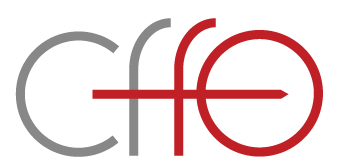
Boundaries are a fascinating phenomenon, a double-edged sword: They provide identity and as such security, comfort, and orientation. But they are also barriers that constrain us, as they inhibit collaboration and contribute to silo culture and an inward orientation of organizations.
Today, boundaries are constantly challenged through digital transformation dynamics that shake up traditional functional roles and established market and stakeholder relationships. We are in a process of (inter)organizational reconfiguration that requires dealing with boundaries in new and creative ways.
boundaries constitute the essential space
where learning and innovation happens
This is a great opportunity as boundaries constitute the essential space where learning and innovation happens, on an individual, organizational, and strategic level. Only if we “play at the edge”, “reach across the aisle”, or “expose ourselves to the unknown”, we can transcend existing paradigms, mindsets, and behavioral patterns.
Approaches such as open innovation, hackathons, co-creation architectures, corporate start-up incubators, creativity labs etc. are capitalizing on this insight; yet, they often remain alien islands within the dominant operating model of organizations. Facing rigid boundaries of old processes, structures and mindsets, they have a hard time to “cross over” and make a real difference where it counts.
The same holds true when it comes to innovating corporate learning – a practice that is tasked with shaking up mindsets, but is also itself in desperate need of reinvention. If we want to enable a culture of learnership which is driven by learners and seamlessly embedded in the business processes of the firm, the learning function must cross the chasm that all too often separates it from the rest of the organization. It must engage in novel ways with internal and external stakeholders to jointly create a collaborative thrust towards a shared accountability for learning as the new way to work – and reshape its identity in the process.
This is a difficult and delicate task, requiring courage, political skills, the willingness to give up dear habits, acquire a new mindset, new capabilities, and embark on a joint learning journey with functional peers and the relevant external environment.
To embark on this journey, it is important to develop a deeper understanding about the double-faced nature of boundaries and find creative ways to design and manage them effectively. This holds particularly true for those who are tasked with creating learning architectures that are supposed to foster agility, creativity and continuous strategic reinvention.
Some questions that come to mind in this context are:
- What holds L&D back when it comes to cross-boundary collaboration?
- How can L&D engage with key stakeholders such as Strategy, Innovation, IT, Communication, Marketing, and business operations to foster a culture of ubiquitous learning accountability?
- How can L&D collaborate with stakeholders of the extended enterprise (customers, suppliers, regulators, partners, co-opetitors etc.) to leverage their perspective and jointly drive learning and innovation, from the outside in? Are platforms a solution?
- How to deal with boundaries between HQ and regional/business units – also in light of the new boundary dynamics unleashed through de-globalization/protectionism
- Through which interventions can we create a culture of co-creation and cross-boundary collaboration? How can we leverage collaborative technologies in that context?
- Opening boundaries comes with its risks: How can we assure functional expertise and professional identity without paying the price of a silo culture?
Feel free to share your thoughts and ideas if one or more of these questions ring a bell. They’re numbered, so you can relate to the ones you’d like to comment on.
About the author
Roland Deiser is a Drucker Senior Fellow and Director of the Center for the Future of Organization at the Drucker School of Management at Claremont Graduate University. His most recent books are Designing the Smart Organization (2009) and Transformers: Executive Conversations about Creating Agile Organizations




This article is very informative, thank you for giving your time in posting these insightful words.
Interesting and innovative